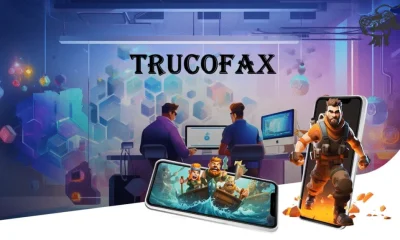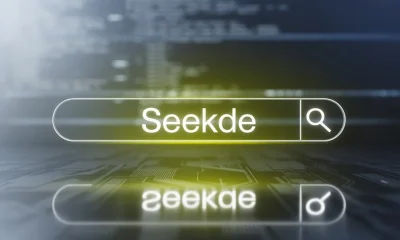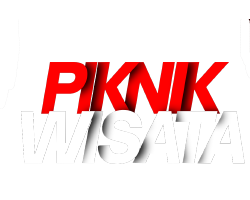Tech
The Art of Conversation: The Key to Human Connection
Published
3 weeks agoon
By
Rock Seo
Conversations are a fundamental part of human interaction. From casual chats with a friend to life-altering discussions, how we communicate plays a significant role in shaping our relationships, societies, and even our personal growth. At its core, conversation is not just about exchanging information, but about connecting with others on a deeper level, sharing experiences, and creating understanding.
In this article, we will explore the different aspects of conver sation: its role in communication, the skills required to have meaningful conversations, the psychological benefits of engaging in dialogue, and the evolving nature of conversations in the digital age.
The Power of Words: Conversations as a Tool for Connection
At its most basic, conversation serves as a means of transferring information. Whether we’re explaining something, asking questions, or narrating experiences, words carry meaning and allow us to convey our thoughts. However, conversations go beyond this simple exchange of facts. They are the primary way in which we connect with others, understand differing perspectives, and build relationships.
The word “conversation” itself originates from the Latin conversatio, meaning “to live with” or “to be in the company of.” This highlights the central role that conversation plays in fostering companionship and collaboration. Human beings are social creatures, and the need to connect with others is embedded deep within our biology. Conver sations help fulfill this need by providing a space where we can share ideas, challenge beliefs, seek advice, and learn from one another.
The Mechanics of Conversation: Listening and Speaking
Effective conversation is a two-way street. While speaking is important, listening is just as crucial, if not more so. Too often, conversations become one-sided when one person dominates the discussion or when individuals fail to truly listen to one another. The ability to listen attentively is a skill that can transform a regular exchange into a meaningful dialogue.
Active listening involves more than just hearing words; it requires the listener to engage with the speaker emotionally and intellectually. This means maintaining eye contact, nodding in understanding, and asking clarifying questions when necessary. It also means being present in the moment and not allowing distractions (like phones or external noise) to interfere with the conversation.
On the other hand, speaking is equally important in fostering a healthy conversation. Effective speaking goes beyond simply articulating thoughts clearly; it involves using empathy and tact. The way we say things—our tone, body language, and choice of words—can impact the conversation’s outcome. A thoughtful, well-timed response can deepen the connection, while a hasty or poorly chosen remark may create misunderstandings.
The Role of Nonverbal Communication
Words are important, but they are only part of the conversation. Nonverbal communication—such as body language, facial expressions, and tone of voice—carries a wealth of information. In fact, studies have shown that nonverbal cues account for up to 93% of communication, with body language alone contributing significantly to how we interpret others’ feelings and intentions.
For example, if someone says they are “fine” but their arms are crossed, their posture is tense, and their facial expression is grim, the nonverbal signals suggest that they are not actually fine at all. Understanding these cues can help us navigate conver sations more effectively, allowing us to pick up on unspoken emotions or discomforts.
Similarly, the tone of voice can convey nuances of meaning that words alone might not. A sarcastic tone, for instance, may suggest the opposite of what the words themselves are saying, while a calm and warm voice can add sincerity to even the most straightforward statement.
The Psychological Benefits of Meaningful Conversations
Engaging in meaningful conversations has profound psychological benefits. For one, it provides a sense of validation. When we share our thoughts and feelings, and others listen with empathy and understanding, it affirms our experiences. This validation is essential for emotional well-being, as it helps us feel seen and heard.
Conversations also play a key role in reducing stress. Talking things out with a trusted friend or family member can help us process our emotions, gain clarity, and find solutions to problems. The simple act of expressing ourselves can have a therapeutic effect, releasing pent-up tension and allowing us to feel more balanced.
Moreover, conversations encourage cognitive growth. Discussing different viewpoints or challenging ideas can stimulate intellectual development, help us reframe our thinking, and expand our perspectives. Whether it’s a heated debate or a lighthearted chat, exchanging ideas allows us to refine our understanding of the world and ourselves.
The Evolution of Conversation in the Digital Age
In the digital age, the nature of conver sation has evolved significantly. Technology has changed how we communicate, offering new ways to connect with others across vast distances. Social media platforms, instant messaging, and video calls have made it easier than ever to engage in conver sations, but these forms of communication come with both benefits and challenges.
On the positive side, digital communication enables people to stay in touch with friends, family, and colleagues no matter where they are located. It has opened doors for new social connections, allowing individuals to interact with people from different cultures and backgrounds. Virtual spaces, such as forums, online communities, and chat rooms, provide opportunities for people to discuss shared interests, exchange ideas, and support one another.
However, digital conver sations also have their drawbacks. The rise of text-based communication, for example, can lead to misunderstandings. Without the ability to see body language or hear tone, it’s easy to misinterpret a message. Additionally, the anonymity that comes with online interactions can sometimes lead to less empathetic or more hostile conversations. The instant nature of digital communication, while convenient, can also make conversations feel shallow or rushed, leaving little room for reflection.
Another issue is the prevalence of “echo chambers” in online spaces, where individuals engage in conver sations only with like-minded people, reinforcing their existing beliefs rather than challenging them. This phenomenon can limit personal growth and understanding, making it harder for people to develop a broad, balanced perspective.
The Future of Conversation
As technology continues to advance, the future of conver sation is likely to be shaped by even more sophisticated tools and platforms. Artificial intelligence, for instance, is already playing a role in conversations through chatbots and virtual assistants. These tools can help facilitate communication, answer questions, and even simulate human-like interactions. However, while AI may enhance our ability to communicate, it is unlikely to replace the rich, nuanced connections that come from human-to-human conversation.
Ultimately, the essence of a meaningful conversation will always rely on genuine human connection. No matter how technology evolves, the basic principles of active listening, empathy, and thoughtful communication will remain at the heart of every great conver sation.
Conclusion
Conversations are more than just an exchange of words—they are the glue that binds us together as individuals and communities. Whether through listening or speaking, nonverbal cues or emotional expression, every conver sation is an opportunity to connect, learn, and grow. In a world where technology often drives us to focus on efficiency, we must not lose sight of the power of meaningful dialogue. After all, it is through conversation that we find not only understanding but also our shared humanity.
You may like
Tech
Gifort: Revolutionizing the Digital Economy with Blockchain Technology
Published
6 hours agoon
November 19, 2025By
Rock Seo
In the world of digital Gifort finance and blockchain technology, new platforms are emerging rapidly, each promising to offer something unique or improve on existing systems. One such platform is Gifort, a relatively new but growing name in the digital space. Positioned at the intersection of decentralized finance (DeFi), digital assets, and blockchain technology, Gifort has the potential to reshape the way individuals and businesses interact with digital economies.
In this article, we’ll explore what Gif ort is, its key features, and how it stands to transform the digital financial landscape.
What is Gifort?
Gifort is a decentralized financial platform built on blockchain technology, with a primary focus on providing seamless and secure transactions for digital assets, including cryptocurrencies, tokens, and other blockchain-based instruments. The platform is designed to empower both individual users and businesses by giving them a more efficient, transparent, and cost-effective way to manage and exchange digital assets.
At its core, Gifort leverages blockchain’s decentralization to eliminate intermediaries such as banks or payment processors, reducing the cost of transactions and enhancing security. Additionally, Gifort integrates a wide range of services within its ecosystem, allowing users to trade, invest, lend, borrow, and stake assets in an open and permissionless environment.
The Genesis of Gifort
Gifort’s journey began with the idea of addressing the limitations of traditional financial systems and the hurdles that come with centralized institutions. The founders recognized the growing demand for financial platforms that are faster, more cost-effective, and accessible to anyone globally. At the same time, the project sought to provide a solution to the complexity and inefficiencies that many blockchain platforms face when it comes to scalability, security, and user experience.
Unlike traditional systems that often operate under a single point of control, Gif ort is built on a decentralized network, which allows for enhanced transparency and gives users more control over their assets. By leveraging smart contracts and decentralized applications (dApps), Gifort aims to democratize access to financial services and promote a more inclusive digital economy.
Key Features of Gifort
1. Decentralized Finance (DeFi) Integration
One of the standout features of Gifort is its deep integration with DeFi, which has been one of the most disruptive trends in the digital economy in recent years. DeFi platforms allow users to engage in financial activities such as lending, borrowing, staking, and yield farming without relying on traditional financial intermediaries. Gifort enables these activities through a decentralized platform that ensures users retain control over their assets at all times.
By using smart contracts to automate financial transactions, Gifort eliminates the need for a central authority and allows for quicker, more cost-effective transactions. This integration also gives users access to a range of DeFi products, such as liquidity pools and automated market makers (AMMs), enabling them to earn passive income through their digital assets.
2. Staking and Yield Farming
Gifort has placed a strong emphasis on staking and yield farming, two popular mechanisms in the DeFi space that allow users to earn rewards for contributing their assets to the network. Staking involves locking up a certain amount of cryptocurrency in a network to help secure and validate transactions. In return, users earn rewards in the form of more tokens.
Yield farming, on the other hand, involves providing liquidity to decentralized exchanges (DEXs) or liquidity pools, where users earn interest or additional tokens as rewards for their participation. Both of these mechanisms are integrated into the Gifort ecosystem, allowing users to diversify their income streams and benefit from the growing DeFi trend.
3. Blockchain Interoperability
Gifort is designed to be interoperable with a variety of different blockchains, which is a critical feature for any platform operating in the multi-chain world of digital assets. By enabling cross-chain transactions, Gifort allows users to trade assets across different blockchain networks without the need for centralized exchanges.
This interoperability ensures that Gifort users can access a wider range of assets and services, fostering a more liquid and dynamic digital ecosystem. Whether it’s trading tokens from Ethereum, Binance Smart Chain (BSC), or other blockchain platforms, Gif ort’s infrastructure facilitates seamless transactions and asset management.
4. Security and Privacy
Security is a top priority in the world of blockchain and cryptocurrency, where vulnerabilities can result in significant financial losses. Gifort addresses these concerns through several layers of security, including encryption, multi-signature wallets, and two-factor authentication (2FA) for user accounts.
Moreover, Gif ort’s decentralized nature inherently enhances security by reducing the risk of single points of failure or centralized hacking threats. Smart contracts undergo rigorous audits to ensure that the code is secure and that the platform operates as intended. For users, the platform’s focus on privacy ensures that personal data and financial transactions are protected from unauthorized access.
5. User-Friendly Interface
One of the challenges in the cryptocurrency and blockchain space is the complexity of user interfaces, which can deter beginners from engaging with these technologies. Gif ort seeks to address this issue by offering an intuitive, user-friendly interface that simplifies the process of trading, staking, and managing digital assets.
The platform offers easy-to-understand dashboards, real-time market data, and clear instructions for beginners. This makes Gif ort accessible not only to seasoned crypto traders but also to new users who want to learn and participate in the digital economy.
How Gifort Benefits Users
Gifort’s approach to blockchain and decentralized finance offers several benefits to users:
- Lower Costs: By eliminating intermediaries such as banks and payment processors, Gifort reduces transaction fees, making it more affordable for users to send and receive digital assets.
- Global Access: Since the platform operates in a decentralized manner, users from anywhere in the world can access the services provided by Gifort, bypassing traditional barriers to entry.
- More Control: With Gifort, users retain control over their digital assets, rather than relying on third-party custodians. This self-sovereign approach ensures that individuals are responsible for their own funds and can make decisions about how and when to move them.
- Investment Opportunities: By offering staking, yield farming, and DeFi integration, Gif ort provides users with additional ways to grow their digital wealth, making it easier for both investors and casual users to earn passive income.
- Transparency and Security: The blockchain’s transparency and Gif ort’s security features ensure that all transactions are verifiable and that assets are protected from potential fraud or theft.
The Future of Gifort
As the blockchain space continues to evolve, platforms like Gif ort are poised to play an increasingly important role in the digital economy. With a growing focus on Web3 technologies, decentralized finance, and blockchain interoperability, Gifort is well-positioned to capitalize on these trends and bring more users into the fold.
In the future, Gifort plans to expand its offerings, adding more DeFi products and services, integrating with additional blockchain networks, and improving the platform’s scalability. By continuing to innovate and adapt to the rapidly changing landscape, Gif ort could become a major player in the next generation of decentralized financial services.
Conclusion
Gifort is an exciting project that combines the best elements of blockchain, DeFi, and digital assets into a cohesive, user-friendly platform. By providing secure, decentralized, and cost-effective financial services, Gifort is helping to pave the way for a more inclusive and transparent digital economy. With its focus on innovation, security, and ease of use, Gif ort has the potential to be a game-changer in the world of digital finance. Whether you’re a crypto enthusiast, an investor, or someone looking to explore the world of decentralized finance, Gifort offers a compelling option in the rapidly evolving digital space.
Tech
Hothaylost: Connecting Ancient Tales to Contemporary Issues
Published
2 days agoon
November 17, 2025By
Rock Seo
In an era where technology and global Hothaylost connectivity dominate much of our daily lives, the ancient art of storytelling often seems relegated to the past. Yet, stories that have been passed down through generations still hold incredible relevance today. One such tradition is the concept of Hothaylost, a term that draws from various ancient mythologies, oral traditions, and folklore across cultures. The beauty of Hothaylost lies in its ability to link age-old narratives with modern-day challenges, offering wisdom and insight for navigating the complexities of contemporary life.
What is Hothaylost?
The word “Hothaylost” doesn’t originate from a single specific language or culture but rather encapsulates a universal concept. It can be understood as the “wisdom of the forgotten” or the “hidden lessons” embedded within ancient stories and myths. These tales, often overlooked or misunderstood in our fast-paced modern world, are rich with moral teachings, deep psychological insights, and reflections on human nature. Through the lens of Hothaylost, we can reframe these stories not just as relics of the past but as timeless blueprints for solving current dilemmas.
Ancient Tales as Metaphors for Modern Struggles
1. The Hero’s Journey and Personal Growth
One of the most pervasive narrative structures across cultures is the “Hero’s Journey,” a mythic framework first articulated by Joseph Campbell. From the ancient Epic of Gilgamesh to Homer’s Odyssey and even modern epics like Star Wars, the hero’s journey involves a protagonist who embarks on an adventure, faces trials, experiences transformation, and returns with newfound wisdom.
In today’s world, this mythic arc resonates deeply with individual experiences. The modern struggle of navigating mental health challenges, battling societal expectations, or overcoming personal adversity mirrors the trials of the hero. The wisdom of the ancient story teaches us that transformation is a process—often painful, but ultimately rewarding.
This metaphorical “hero’s journey” gives us permission to embrace our own struggles as part of a larger story of growth. Whether it’s dealing with burnout in the workplace, overcoming grief, or searching for personal purpose, Hothaylost reminds us that the pain we experience is not in vain, but a part of a broader, transformative narrative.
2. Environmental Stewardship in Indigenous Narratives
Indigenous cultures around the world have long woven stories of creation and nature that emphasize balance, respect, and stewardship. From the Native American creation stories to the Aboriginal myths of the Australian outback, ancient narratives often convey lessons about the sacred relationship between humanity and the environment.
In today’s world, where the effects of climate change are increasingly evident, these stories become powerful symbols of the need for environmental responsibility. Hothaylost encourages a return to these age-old understandings, urging us to view nature not as something to be exploited, but as a living entity to be cared for. By revisiting these ancient tales, we can draw inspiration for sustainable living practices, conservation efforts, and a more respectful, symbiotic relationship with the Earth.
3. The Fall and Rise of Civilizations: Lessons on Political Power
In classical mythologies like the Greek and Roman legends, as well as stories from the Mahabharata and the Bible, the rise and fall of great civilizations are often depicted as the result of moral decay, unchecked power, and the corrupting influence of greed and ambition. These tales are not just historical narratives but cautionary tales about the dangers of power and the importance of maintaining humility and justice.
In contemporary society, where political unrest, corruption, and the erosion of trust in leadership are prominent issues, these ancient myths serve as stark reminders. The lessons within Hothaylost prompt us to reflect on how power dynamics in modern politics—whether corporate, governmental, or social—echo the tragic arcs of past civilizations. These stories challenge us to think critically about leadership, fairness, and accountability, urging us to take action against corruption and injustice.
The Psychological Wisdom Embedded in Ancient Narratives
Beyond social and environmental issues, Hothaylost also sheds light on the psychological dimensions of ancient stories. For example, the figure of the shadow self in Jungian psychology closely parallels the characters of tricksters or monsters found in many mythologies. These figures often represent repressed aspects of the human psyche that we are encouraged to confront.
The story of Medusa, a tragic figure in Greek mythology, can be read as a metaphor for trauma and repressed rage. Medusa’s transformation from a beautiful woman into a monster reflects the destructive consequences of unaddressed emotional pain. In modern therapeutic contexts, this myth encourages individuals to confront their own emotional scars, rather than letting them fester and distort their lives.
Similarly, the archetype of the wise old man or woman, seen in figures like Merlin or the Oracle of Delphi, represents the wisdom that comes with age and experience. These figures serve as guides, helping the hero (or individual) navigate their internal struggles. In a world increasingly focused on youth and instant gratification, these characters remind us of the value of patience, introspection, and the power of slow, deliberate learning.
Reviving Hothaylost in Modern Society
In an age of rapid technological advancement, there’s a real danger of forgetting the wisdom embedded in ancient tales. Hothaylost offers us a way to reconnect with the stories of our ancestors, allowing us to see how they continue to hold relevance for contemporary issues.
A revival of these ancient stories in modern discourse can take many forms: from reimagining them in literature, film, and art, to integrating them into educational curricula, therapy practices, and environmental movements. Social media platforms, often dominated by fleeting trends, can be repurposed as spaces for sharing and discussing these ancient narratives, allowing them to evolve and adapt to the digital age.
Conclusion
Hothaylost is a concept that invites us to rediscover the relevance of ancient tales in a rapidly changing world. These stories, whether they originate in mythology, folklore, or religious traditions, contain profound insights that can guide us through the challenges of modern life. By connecting with these tales, we not only preserve the wisdom of the past but also find new ways to address contemporary issues, from personal growth to environmental sustainability and political integrity.
Tech
Lidarmos: A Full Guide with Meaning, Benefits, and Importance
Published
2 weeks agoon
November 4, 2025By
Rock Seo
Lidarmos is a term that has recently gained traction in various fields, particularly in the areas of technology, personal development, and even social interactions. It represents more than just a word; it’s a concept that resonates with values like understanding, connection, and progress. But what exactly is Lidarmos, and why is it becoming increasingly relevant in our lives? In this article, we’ll break down the meaning of Lidar mos, its benefits, and its importance in modern society.
What is Lidarmos?
At its core, Lidarmos is a concept that emphasizes deep understanding and the cultivation of meaningful connections in all aspects of life. The word itself may sound unfamiliar, but it’s derived from a combination of elements that suggest unity, mindfulness, and mutual respect.
While the term “Lidarmos” is still in its formative stages of adoption, it can be best understood as the bridge between traditional human values and the fast-paced, digital age. It refers to both the practice of self-awareness and the idea of creating an environment of cooperation and respect—whether that’s in interpersonal relationships, the workplace, or even within the context of technology development.
Some believe that Lidarmos also draws inspiration from the philosophy of holistic growth, combining self-development with the ethical progression of society. It encourages people to elevate their emotional intelligence, communicate effectively, and form deep connections while also advocating for the sustainable and ethical use of technology.
The Meaning of Lidarmos
The meaning behind Lidarmos is multi-dimensional. It’s a term that blends together several core ideas:
- Unity and Collaboration: At its foundation, Lidar mos is about people coming together to support one another and collaborate toward common goals. It focuses on the importance of teamwork, whether in personal relationships, business ventures, or larger societal projects.
- Emotional and Intellectual Awareness: Understanding one’s emotions, behaviors, and thought patterns is a crucial part of Lidarmos. It promotes the idea that being emotionally intelligent—able to recognize, understand, and manage emotions—is a key to successful and meaningful interactions.
- Mindful Technology Use: Lidarmos acknowledges that in the modern world, technology plays a central role in shaping how people communicate, work, and live. The concept encourages individuals and organizations to use technology mindfully, prioritizing human connection and ethical decision-making over efficiency at all costs.
- Personal and Collective Growth: Lidarmos champions both personal development and societal progress. It stresses that true growth is only achieved when individuals grow in ways that contribute positively to their communities, workplaces, and the larger world.
The Benefits of Lidarmos
The concept of Lidarmos offers a wide range of benefits, particularly for individuals seeking to improve their relationships, productivity, and overall well-being. Some of the key benefits include:
- Improved Communication Skills:
Lidarmos places a significant emphasis on effective communication. By adopting the principles of emotional intelligence and mindful engagement, individuals can foster more transparent and empathetic communication. This leads to stronger personal relationships, clearer workplace communication, and better conflict resolution. - Enhanced Emotional Intelligence:
One of the core aspects of Lidarmos is the cultivation of emotional intelligence (EQ). By becoming more self-aware and attuned to the emotions of others, individuals can make more informed decisions, avoid misunderstandings, and approach situations with greater empathy. High EQ is associated with stronger leadership, better interpersonal relationships, and improved decision-making. - Stronger Teamwork and Collaboration:
Lidarmos stresses the value of collaboration in all areas of life. By prioritizing unity and mutual respect, individuals are more likely to foster a cooperative atmosphere in both personal and professional environments. In business, this can lead to more cohesive teams, better project outcomes, and higher levels of innovation. - Better Work-Life Balance:
Lidarmos encourages people to align their professional and personal lives with their values, helping to reduce stress and burnout. It advocates for taking a holistic approach to life, where career success doesn’t come at the expense of personal health, relationships, or well-being. - Sustainable Technology Use:
In an age where technology is often seen as a double-edged sword, Lidar mos promotes the responsible and mindful use of digital tools. It encourages individuals and organizations to harness technology for positive purposes—whether it’s for enhancing productivity, fostering creativity, or building deeper human connections—without losing sight of human values. - Personal Growth and Fulfillment:
Lidarmos is also about continuous self-improvement. By encouraging people to pursue growth not just for personal gain, but for the betterment of society, it helps individuals find deeper meaning and purpose in their lives. This sense of fulfillment can lead to greater satisfaction and a more positive outlook on life.
Why Lidarmos is Important Today
In today’s world, where technology and globalization are reshaping how we work, communicate, and relate to one another, the principles of Lidarmos are becoming more critical than ever.
- Social Fragmentation:
In many societies, individuals are increasingly isolated, despite the prevalence of digital communication. Lidarmos can help combat this isolation by encouraging deeper, more meaningful connections. It stresses the importance of fostering relationships that are built on empathy, mutual respect, and understanding, which are often overlooked in the fast-paced, digital-first environment we live in. - Mental Health Crisis:
Mental health challenges have become a growing concern worldwide. With the stresses of modern life, the rise of digital dependency, and the overwhelming demands placed on individuals, the principles of Lidarmos—emotional intelligence, self-awareness, and mindfulness—offer tools for improving mental well-being. By cultivating a balanced approach to life and developing healthier habits, Lidar mos can be a valuable framework for reducing stress and promoting emotional health. - Ethical Considerations in Technology:
As technology continues to advance, there are increasing concerns about its ethical implications. From data privacy issues to AI ethics, the responsible use of technology is a topic that requires serious consideration. Lidarmos can provide a model for using technology in a way that enhances human connections rather than detracts from them. It advocates for using tech in ways that are aligned with human values, ethical considerations, and the well-being of society as a whole. - Workplace Dynamics:
The modern workplace is evolving, with many companies now adopting remote work, hybrid models, and digital collaboration tools. In this changing landscape, Lidarmos can help organizations build a culture of understanding, transparency, and collaboration. By promoting emotional intelligence and encouraging open communication, businesses can create a more inclusive, innovative, and productive work environment.
Conclusion
Lidarmos represents a forward-thinking approach to modern life, where personal growth, emotional intelligence, and mindful technology use are central to human progress. As we navigate the complexities of the 21st century, adopting the principles of Lidarmos can help individuals and societies thrive. Whether you’re looking to improve your relationships, enhance your career, or contribute positively to the world, Lidarmos offers a holistic framework that can guide you on your journey.
Embrace Lidarmos, and you’ll find that the path to personal fulfillment, professional success, and a better world begins with understanding—both of yourself and of those around you.
Trending
-

 News4 weeks ago
News4 weeks agoKirby Dedo Guide: All You Need to Know About Character Abilities and Combos
-

 Local Information4 weeks ago
Local Information4 weeks agoSodiceram Explained: Innovative Designs and Eco-Friendly Practices
-

 Tech4 weeks ago
Tech4 weeks agoTrucofax Revolutionizes In-Game Customization
-

 Foods4 weeks ago
Foods4 weeks agoExploring the Unique Flavors of Soutaipasu: A Culinary Journey
-

 Local Information4 weeks ago
Local Information4 weeks agoTrucofax: A Comprehensive Guide to Its Features and Benefits
-

 Tech4 weeks ago
Tech4 weeks agoSeekDe: The Rising Platform for Freelancers and Clients in a Crowded Market
-

 Entertainment4 weeks ago
Entertainment4 weeks agoAxurbain: The Unsung World-Builder of the Wandering Inn
-

 Health4 weeks ago
Health4 weeks agoUnderstanding Attrition: Causes, Impacts, and Solutions
